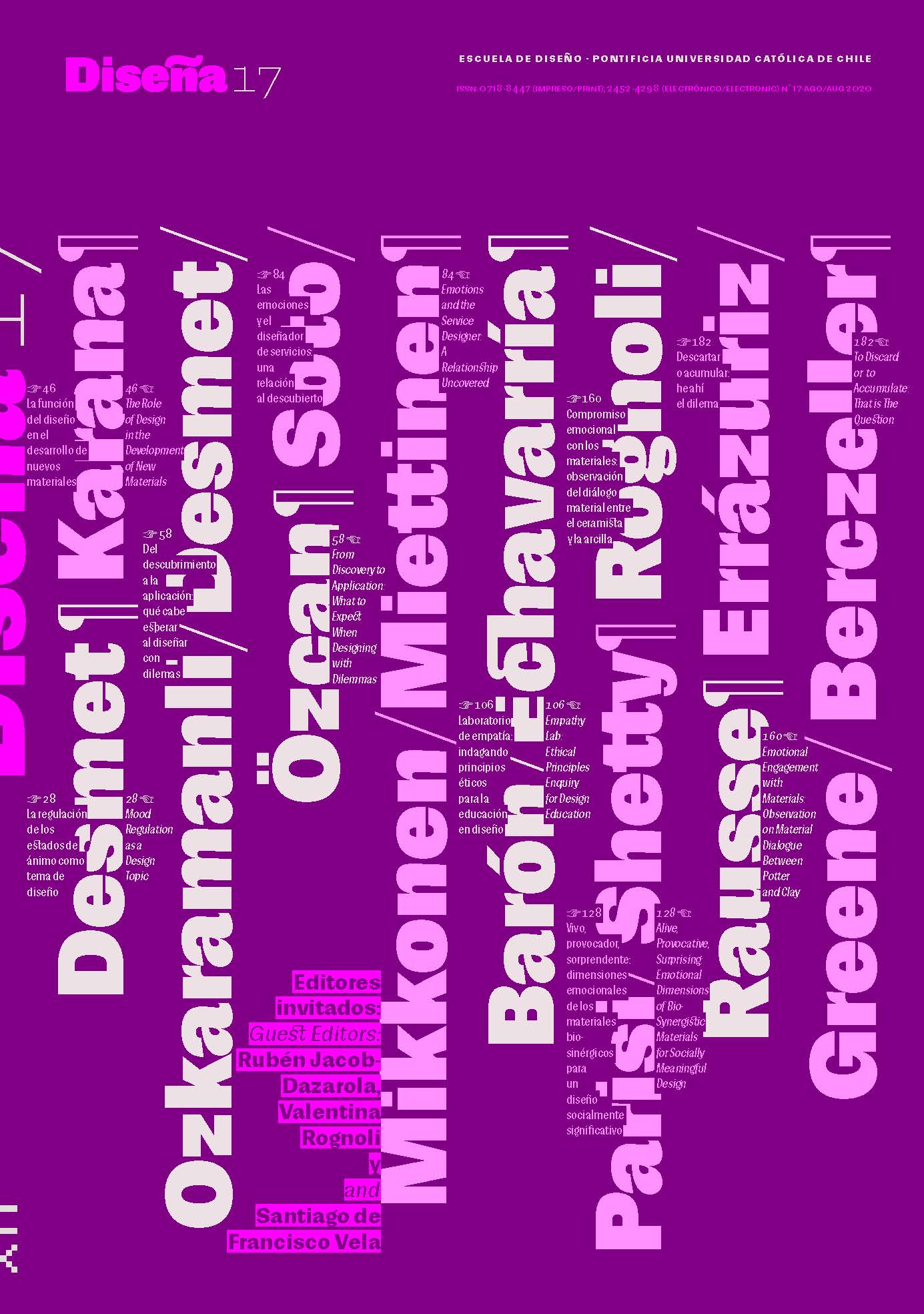Mood Regulation as a Design Topic: Interview with Pieter Desmet
Main Article Content
Abstract
Pieter Desmet is the founding co-director of the Delft Institute of Positive Design, chair of the TU Delft Department of Human Centered Design, and Director of the Delft Design Labs. After introducing cognitive emotion theory to the field of design research, he established the Design and Emotion Society. Full professor of Design for Experience at TU Delft, Desmet is also co-editor of Design and Emotion Moves (Cambridge Scholars, 2008) and co-author of Positive Design: An Introduction to Design for Subjective Well-Being (IJDesign, 2013). Pieter Desmet, who holds a PhD in the domain of Emotion Psychology, has been recently awarded a five-year personal grant to research about the nuances of human mood in human-product interactions. Besides his academic activities, he also contributes to local community projects, such as a recently developed sensory wellness neighborhood park, and a cultural ‘House of Happiness’ located in Rotterdam. In this interview, Desmet discusses the background to positive design, as well as the practical and ethical challenges that arise from using such an approach. He also refers to his latest research initiative: Design for Mood Regulation. Finally, Desmet explains how he transfers the knowledge he develops to companies.
Downloads
Article Details

This work is licensed under a Creative Commons Attribution-ShareAlike 4.0 International license.
COPYRIGHT NOTICE
All contents of this electronic edition are distributed under the Creative Commons license of "Attribution-ShareAlike 4.0 Internacional" (CC-BY-SA). Any total or partial reproduction of the material must mention its origin.
The rights of the published images belong to their authors, who grant to Diseña the license for its use. The management of the permits and the authorization of the publication of the images (or of any material) that contains copyright and its consequent rights of reproduction in this publication is the sole responsibility of the authors of the articles.
References
COOPER, A. (1999). The Inmates Are Running the Asylum: Why High-Tech Products Drive Us Crazy and How to Restore the Sanity. Macmillan.
DESMET, P. M. A., XUE, H., & FOKKINGA, S. F. (2019). The Same Person Is Never the Same: Introducing Mood-Stimulated Thought/Action Tendencies for User-Centered Design. She Ji: The Journal of Design, Economics, and Innovation, 5(3), 167–187. https://doi.org/10.1016/j.sheji.2019.07.001
DUNNE, A. (1999). Hertzian Tales: Electronic Products, Aesthetic Experience, and Critical Design. MIT Press.
FRIJDA, N. H. (1986). The Emotions. Cambridge University Press.
GAVER, B., DUNNE, T., & PACENTI, E. (1999). Design: Cultural Probes. Interactions, 6(1), 21–29. https://doi.org/10.1145/291224.291235
JENSEN, R. (1999). The Dream Society: How the Coming Shift from Information to Imagination Will Transform Your Business. McGraw-Hill.
JORDAN, P. W. (2000). Designing Pleasurable Products: An Introduction to the New Human Factors. CRC Press. https://doi.org/10.4324/9780203305683
LAZARUS, R. S. (1991). Progress on a Cognitive-Motivational-Relational Theory of Emotion. American Psychologist, 46(8), 819–834. https://doi.org/10.1037/0003-066X.46.8.819
PETERSON, C., & SELIGMAN, M. E. P. (2004). Character Strengths and Virtues: A Handbook and Classification. American Psychological Association.
PICARD, R. W. (1997). Affective Computing. MIT Press.
PINE, B. J., & GILMORE, J. H. (1999). The Experience Economy: Work is Theatre & Every Business a Stage. Harvard Business Press.
RYAN, R. M., & DECI, E. L. (2000). Self-determination Theory and the Facilitation of Intrinsic Motivation, Social Development, and Well-being. American Psychologist, 55(1), 68–78. https://doi.org/10.1037/0003-066X.55.1.68
SCHMITT, B. (1999). Experiential Marketing. Journal of Marketing Management, 15(1–3), 53–67. https://doi.org/10.1362/026725799784870496

